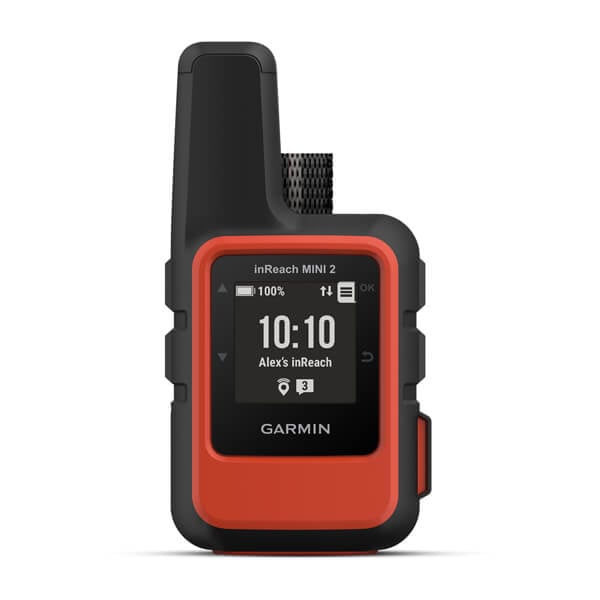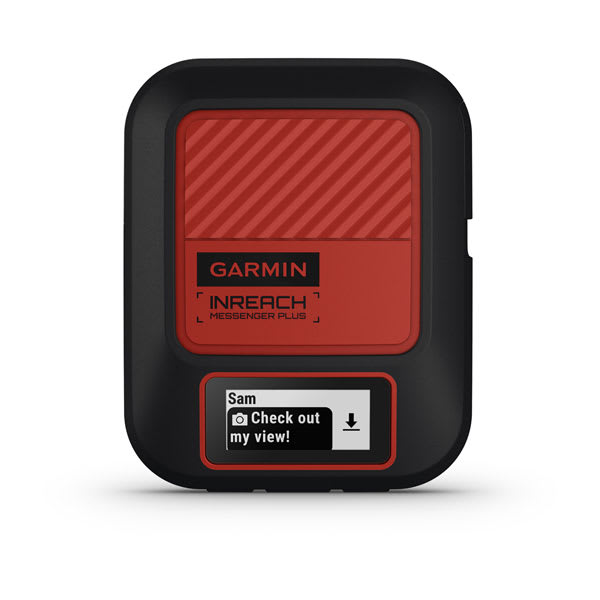
Why Should I Buy a Garmin Satellite Communicator?
What’s the difference between a satellite communicator and a personal locator beacon?
Whether you are backcountry skiing, hiking a mountain or even driving in a remote area, you should be prepared for an emergency — and your cellphone may not be enough.
That’s where satellite devices such as a satellite communicator or a personal locator beacon (PLB) come in.
When you’re out of reach of cell towers, these satellite devices help you get assistance in emergency situations. Which one is right for you? Read on to learn more.
What is a satellite communicator?
A compact, lightweight and durable satellite communicator, such as Garmin inReach® Mini 2 or inReach® Messenger Plus, allows you to explore beyond the limits of cell networks and can help give you peace of mind knowing you can send an SOS in an emergency while staying in touch with loved ones through two-way messaging. An active satellite subscription is required to access the global Iridium® satellite network1.
Before traveling, you can add emergency contacts, a trip itinerary, medical conditions and more to your account that could help you in an emergency.
Pressing the SOS button on your inReach device connects you with Garmin ResponseSM, our 24/7-staffed international emergency response coordination center. Team members will notify a local search and rescue team and continue to communicate with you while help is on the way.
Garmin Response has supported more than 14,500 inReach emergency requests in more than 150 countries to date.
You can easily share your location with loved ones through live tracking or by including your GPS coordinates in your messages.
With any inReach device, you can send and receive custom messages, check-in messages and quick text messages. That two-way messaging can help bring peace of mind to you and your loved ones. For example, if you’re in the backcountry and realize you won’t be home as planned (but don’t need to send an SOS), you can set a loved one’s mind at ease with two-way messaging on inReach. Messages can be sent within 30 seconds to 1 minute under ideal conditions but could take longer, depending on your surroundings.
You can also receive detailed weather forecasts — for your current location or any other destination on your itinerary — on your inReach or paired smartphone.
With inReach Messenger Plus, you can also exchange photos in real time, share voice messages and send long text messages up to 1,600 characters2. These features are available when you download the Garmin Messenger™ app to your paired smartphone. This also applies in an emergency so coordinators can see and hear details of your crisis.
The inReach Mini 2 offers up to 14 days of battery life in 10-minute tracking mode. The inReach Messenger Plus offers up to 25 days of battery life in 10-minute tracking mode. Depending on usage or tracking modes, a fully charged battery on some inReach devices can last for weeks to months — up to a full year. Plus, some inReach devices offer safety charging to help restore a depleted phone.
All inReach devices are built tough to withstand extreme temperatures and weather during rugged outdoor adventures. They can stand up to incidental water exposure of up to 1 meter for up to 30 minutes, so they can withstand splashes, rain or snow.
What is a personal locator beacon?
A PLB has one purpose: sending an SOS. These are designed to be carried by individuals, according to the National Oceanic and Atmospheric Administration (NOAA), and don’t confirm that your SOS was received unless they are equipped with return link service (RLS). The battery generally lasts for several years, and you don’t pay for a subscription.
PLBs typically do not offer two-way messaging or a way to communicate the specifics of the emergency. An RLS-enabled beacon only indicates if the signal was received, not if the rescue has been launched. Sometimes it can take an hour or longer for the recipient to get the initial alert.
National governments monitor distress alerts from PLBs, according to the international Cospas-Sarsat program.
All PLBs in the U.S. need to be registered (for free) with NOAA. Outside of the U.S., the device needs to be registered with the international Cospas-Sarsat program. That program includes 45 nations and two independent search and rescue organizations.
When an SOS is activated on a PLB, it sends a distress signal to satellites, which is then relayed to search and rescue authorities. The registration information will go to the search and rescue team responsible for helping. Rescue teams will try to contact you or the emergency contacts in your registration to learn more about your situation.
In the U.S., your information will be sent to the Air Force and Coast Guard. The U.S. is responsible for PLBs registered in another country that are activated in the U.S.
What’s the difference?
Essentially, a PLB only sends an SOS without additional communication.
inReach devices will confirm your SOS was received, allowing search and rescue teams to contact you for details about your emergency, and better prioritize their response. This can give you reassurance because you’ll know not only that help is on the way, but also that the rescue team is properly equipped and when they should arrive.
During an emergency, you can still message loved ones to let them know what’s happening. And when you send a message from an inReach to emergency personnel or a loved one, they’ll receive it within minutes — a significant advantage over other emergency devices or smartphones with SOS functionality, which can sometimes take an hour or more to transmit the alert.
Even if you get hurt and can’t send an SOS, Garmin Response can still find your last tracking point with inReach location tracking.
For increased functionality and peace of mind for your loved ones, choose a satellite communicator that offers two-way communication, weather reports and location tracking.
When you’re off-the-grid, you never expect to have an emergency. Don’t forget to pack your hiking essentials and clip your inReach to your bag. You can learn more about how inReach devices have helped people in life-threatening situations on our Saved By Garmin blog.
1Active satellite subscription required. Some jurisdictions regulate or prohibit the use of satellite communication devices. It is the responsibility of the user to know and follow all applicable laws in the jurisdictions where the device is intended to be used.
2Photo and voice messaging is available on select devices enabled with inReach® Plus technology. Some devices require use of the Garmin Messenger™ app on your paired smartphone.







